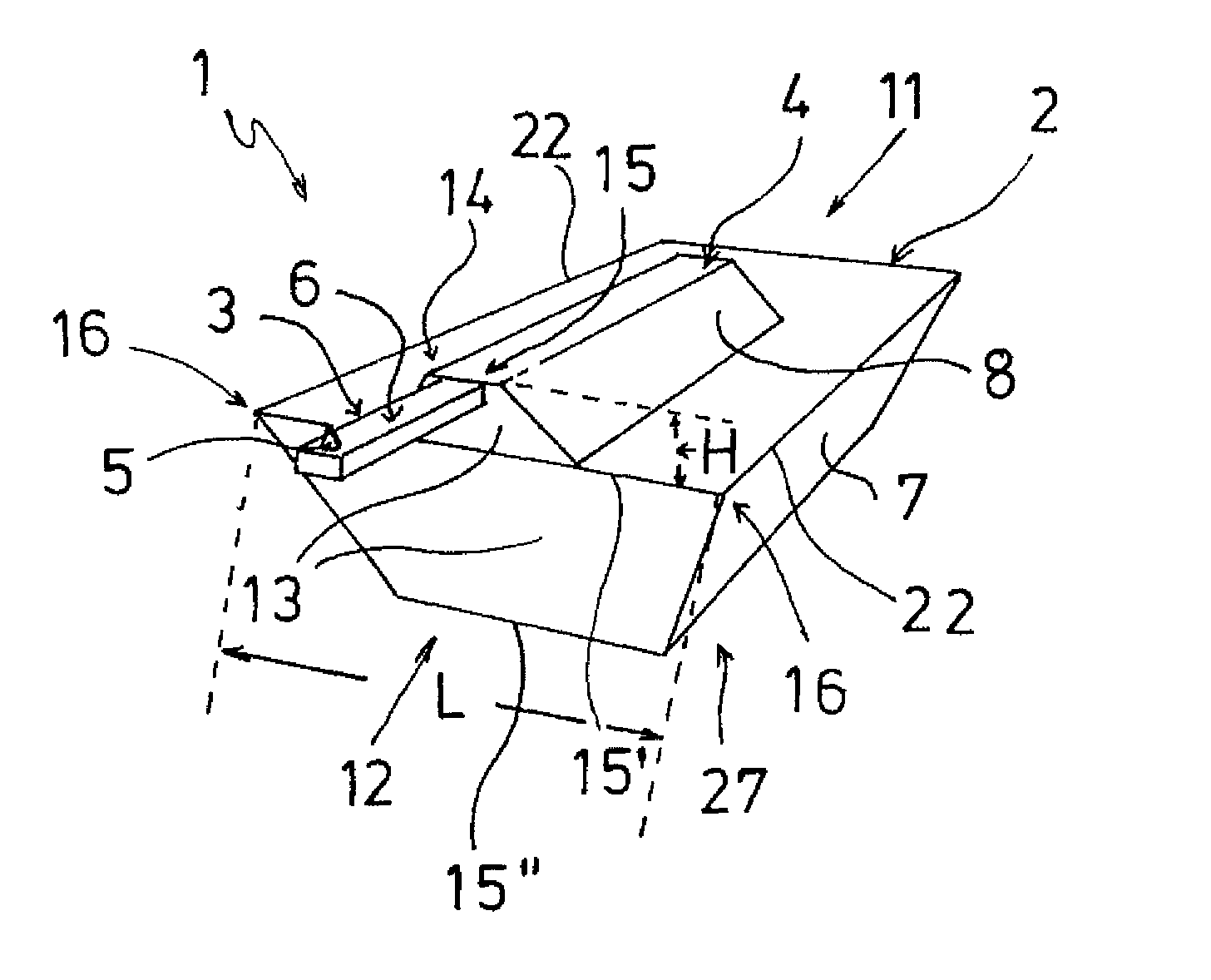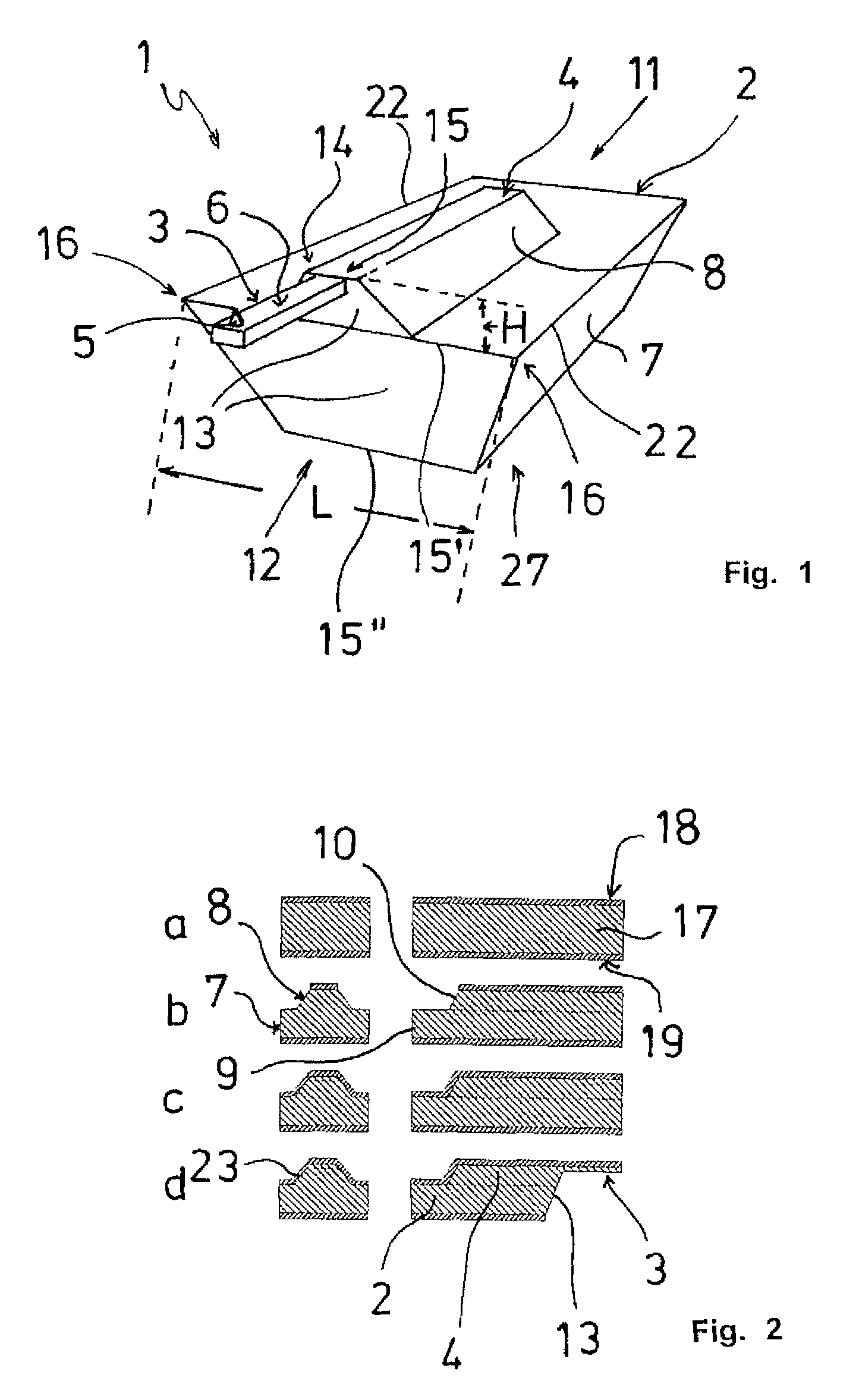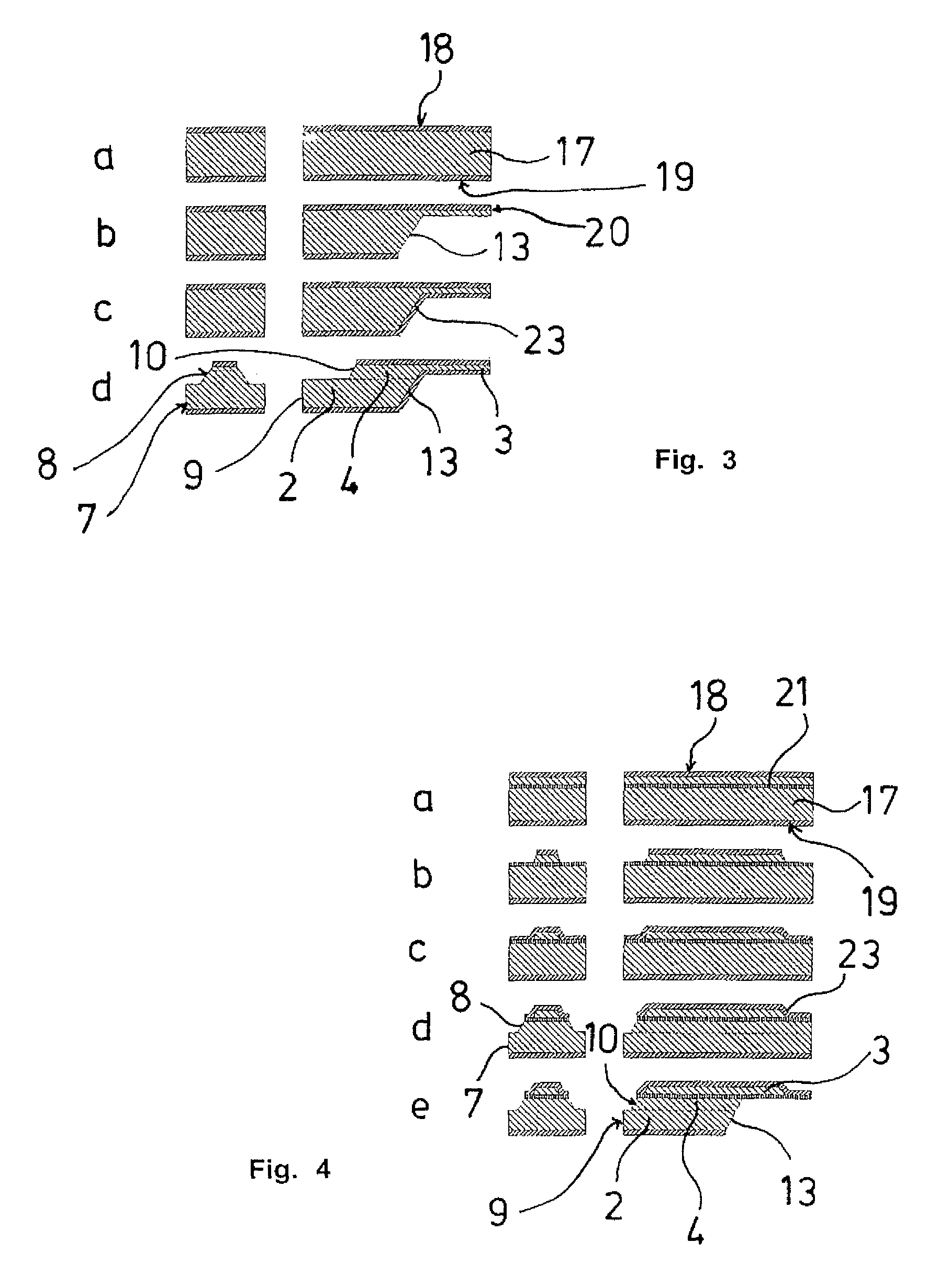SPM probe with shortened cantilever
a cantilever and probe technology, applied in the field of spm probes, can solve the problems of insufficient solutions proposed until now for a defined length of cantilever, low analysis speed, and limited scanning speed
- Summary
- Abstract
- Description
- Claims
- Application Information
AI Technical Summary
Benefits of technology
Problems solved by technology
Method used
Image
Examples
Embodiment Construction
[0050]In the description of the embodiments, terms like top, bottom, top side, bottom side etc. refer to a common operating position of the SPM probe where the cantilever scans from above a sample located below it with a scanning tip pointed downward. In order to show details that would otherwise be obscured, the figures show the probe with a scanning tip pointing upward, contrary to the operating position.
[0051]FIG. 1 shows an SPM probe 1 with a support element 2 where the cantilever 3 starts from an elongated raised portion 4 that is carried by the support element 2. As is common, the cantilever 3 carries, remote from the support element 2, a scanning tip 5 on an underside 6 of the cantilever 3. Laterally, the support element 2 has longitudinal side flanks 7 and the raised portion 4 has longitudinal side flanks 8 as well as rear transverse side flanks 9, 10 that each connect two longitudinal side flanks 7 and 8, respectively. On the front face 12 above which the cantilever 3 protr...
PUM
 Login to View More
Login to View More Abstract
Description
Claims
Application Information
 Login to View More
Login to View More - R&D
- Intellectual Property
- Life Sciences
- Materials
- Tech Scout
- Unparalleled Data Quality
- Higher Quality Content
- 60% Fewer Hallucinations
Browse by: Latest US Patents, China's latest patents, Technical Efficacy Thesaurus, Application Domain, Technology Topic, Popular Technical Reports.
© 2025 PatSnap. All rights reserved.Legal|Privacy policy|Modern Slavery Act Transparency Statement|Sitemap|About US| Contact US: help@patsnap.com



